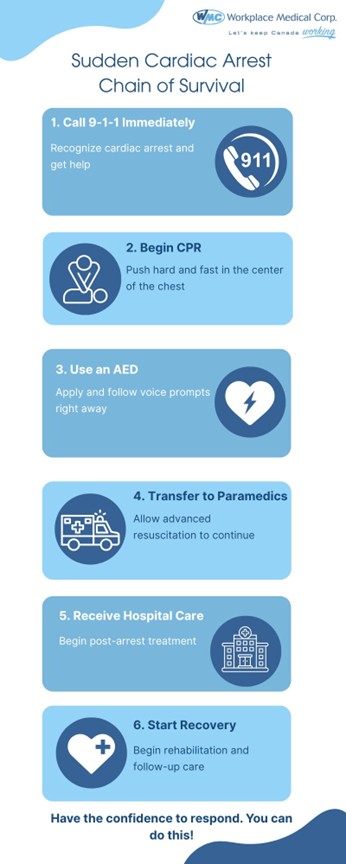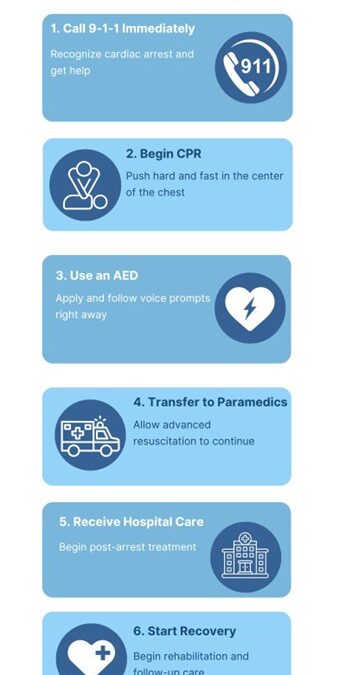Every year, thousands of Canadians experience sudden cardiac arrest (SCA)—a life-threatening emergency that can strike anyone, anywhere, at any time.
October is Sudden Cardiac Arrest Awareness Month, a time to recognize how preparedness can mean the difference between life and death. For employers, this awareness extends beyond knowledge—it’s about readiness in the workplace to respond effectively when seconds count.
Understanding Sudden Cardiac Arrest
Sudden cardiac arrest is not the same as a heart attack. A heart attack occurs when blood flow to the heart muscle is blocked. The heart typically continues beating, but the person remains at high risk of SCA.
A sudden cardiac arrest happens when the heart’s electrical system malfunctions, causing an irregular rhythm (arrhythmia) or complete stoppage. Blood flow to the brain and vital organs ceases, leading to unconsciousness within seconds. Without immediate action, death can occur within minutes.
The Reality in Canada
- Approximately 60,000 cardiac arrests occur in Canada each year—that’s one every nine minutes.
- Fewer than 1 in 10 people survive an out-of-hospital cardiac arrest.
- Most incidents occur outside hospital settings—at home, work, or in public spaces.
- Bystander CPR and AED use can double the chance of survival.
- Despite this, AED use by bystanders remains low, at just 13% in public places.
These statistics provided by the Heart & Stroke Foundation highlight a critical gap in public readiness—and an opportunity for workplaces to play a lifesaving role.
Responding to Sudden Cardiac Arrest: The Chain of Survival
Knowing the chain of survival can be the difference in saving someone’s life. Below are the six steps in the chain of survival.

Every link in this chain matters—but the first three (recognition, CPR, AED use) rely most on ordinary people being prepared to act before emergency responders arrive.
Why Preparation Matters
Few people expect to witness a cardiac emergency—but statistics show it can happen anywhere: at work, in the community, or even at home. A timely response can save a life, protect co-workers, and strengthen a culture of safety.
This October, consider taking proactive steps to protect your teams and community:
- Refresh your CPR and AED training—even a quick refresher can make a difference.
- Know where AEDs are located—your workplace, school, gym, or facility.
- Discuss emergency response plans with your family, coworkers, and leadership team.
- Support broader AED access and awareness through workplace initiatives and community programs.
You never know whose life you might save.
References:
